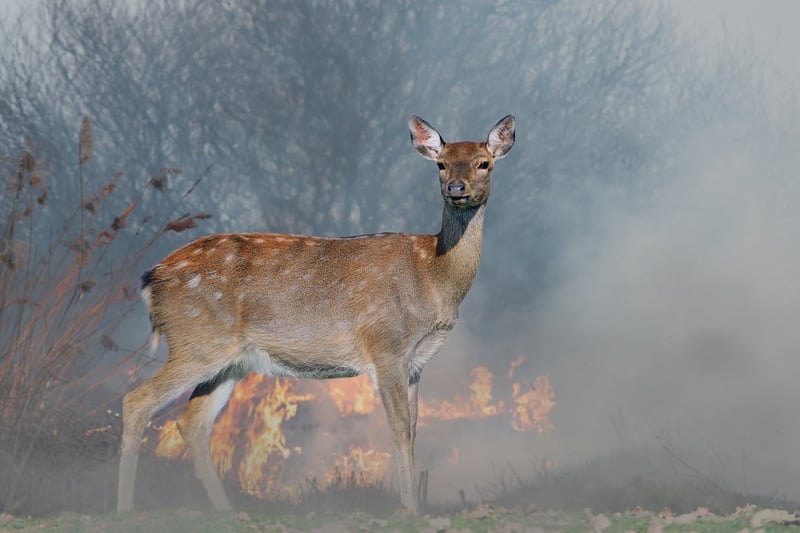
How to help wildlife during wildfires
Blog
Canada’s wildfire seasons are becoming more intense and it’s not just people who are affected.
As wildfires become more frequent and severe across Canada, the toll on wildlife is devastating. From birds fleeing smoke-filled skies to mammals displaced by fast-moving flames, countless animals are caught in the chaos.
While it’s natural to want to help, it’s important to do so in ways that are safe and effective for both you and the animals. Whether you’re in an active fire zone or watching the news from afar, there are meaningful ways you can support wildlife during wildfire season.
Here’s how you can help protect wild animals during wildfires:
1. Provide safe escape routes for fleeing animals
If you encounter wild animals, be patient and give them space so they have a clear path to safely leave the area. Animals fleeing a fire may need time to rest before they can move along. Wildfires are stressful for animals too, so sudden movements or getting too close can cause them to panic or become disoriented. By staying calm and giving them room, you help them find safety more quickly.
2. Keep your pets indoors
This helps your pets stay safe during wildfires and prevents any potential conflicts between domestic and wild animals. It also reduces the risk of pets inhaling smoke, stepping on hot debris or becoming disoriented and lost during an evacuation or chaotic situation. Keeping them inside gives them the best chance of staying calm and protected.
3. Avoid direct interaction with wild animals
Never try to capture or handle wild animals yourself unless directed by a wildlife rehabilitation professional. Even if they appear injured or in need, handling them can cause additional stress or injury to the animal and to you. Trained rehabilitators have the experience and equipment needed to safely and effectively help wildlife in crisis.
Avoid feeding wild animals. While it may feel helpful, feeding can cause harm by creating dependence, spreading disease or encouraging conflict. Wild animals can find food even in challenging conditions.
4. Contact professionals
If you find injured wildlife, reach out to your local wildlife rehabilitation facility for expert assistance! These professionals have the training and resources needed to provide the best care for animals affected by wildfires.
Always follow the guidance of local wildlife experts or rehabilitation professionals, as each situation is different and recommendations can change based on factors like species, health risks and environmental conditions.
5. Learn about your local wildlife
Lastly, learn about your local wildlife! The more you know about your wild neighbours, the better equipped you will be to help. Understanding which species live in your area, their behaviours and how they respond to emergencies like wildfires can guide your actions and ensure you're supporting them in the most effective and respectful way.
Remember, wild animals are incredibly resilient and are typically best left alone or assisted by trained professionals.
Banner photo: Volodymyr Burdiak / Shutterstock